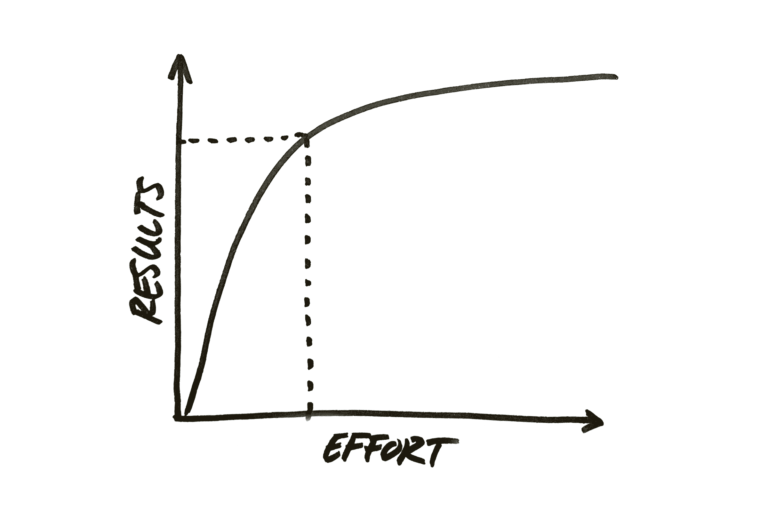Over 120 years ago, an Italian engineer, sociologist, economist, and philosopher named Vilfredo Pareto made an astonishing discovery. He was looking at the distribution of land in Italy, when he observed that approximately 80 % of the land was owned by only 20 % of the population. When he looked at the data from other countries, to his very surprise, the same distribution applied. This observation, that in many systems 80 % of the outcome is created by 20 % of the causes, has become known as the Pareto principle (or 80/20 rule).
Over the years, it became clear that the Pareto principle doesn’t only apply to wealth distributions but that many other natural phenomena follow such a pattern.
In the NBA, 80 % of the points are scored by 20 % of the top players. According to Microsoft, 80 % of system crashes are caused by 20 % of the bugs. 20% of drivers cause 80% of all traffic accidents. And for many companies, 80 % of the profits are generated by 20 % of clients. Even if the distribution isn’t strictly 80 to 20 all the time, the general rule – that most results come from a small minority of causes – still applies to so many things, from internet traffic to student grades to general productivity.
What if we apply the Pareto principle to our design and code work? I don’t have any numbers to back this up but it matches pretty well with my experience: 80 % of a design is often done after 20 % of the time. Bringing your design to 95 % or even 98 % will then take considerably more effort. If you know that, you can purposefully direct your efforts to the things that really count instead of wasting time polishing things that might not be worth the trouble.

Or take design systems or websites as an example. If you have a bunch of components, there will always be a small number of components that are being used all the time. On almost every page of a website, for example. Other components, however, will only be used sparingly. This means that not all components are equally important. Improving the components that are being used more often will have a much greater effect on the overall quality of a system. Identify those important components. Nurture them and make them work really well. At the same time, pay close attention to which elements might be of lower importance and value – and maybe even get rid of them.
But be careful: Using the 80/20 principle can also be a trap. If everyone around you is only investing the 20 % to be good enough, you won’t stand out if you simply do the same. 80 % is not enough. Often, it takes unreasonable effort to make something truly special, and going the extra mile is worth it – you just have to choose carefully where you want to put your energy.
-
This is the 60th post of my 100 days of writing series. You can find a list of all posts here.
~


